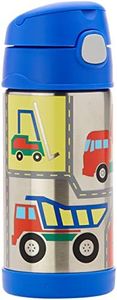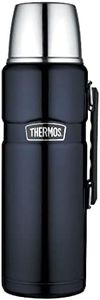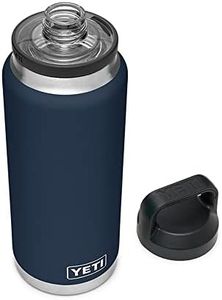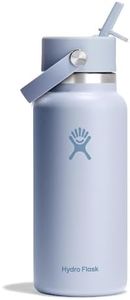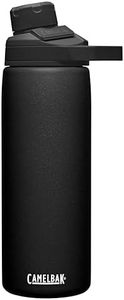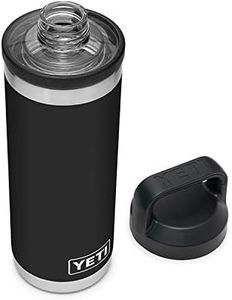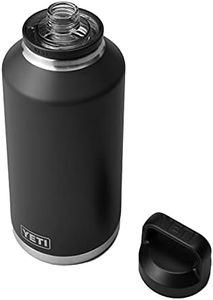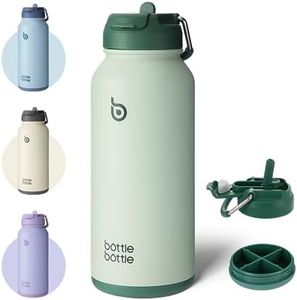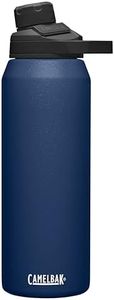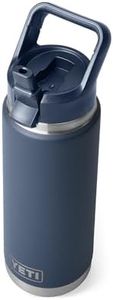We Use CookiesWe use cookies to enhance the security, performance,
functionality and for analytical and promotional activities. By continuing to browse this site you
are agreeing to our privacy policy
10 Best Insulated Bottles
From leading brands and best sellers available on the web.Buying Guide for the Best Insulated Bottles
When choosing an insulated bottle, your main goal is to find a bottle that keeps your drinks at the right temperature for as long as you need, while also matching your preferences for ease of use and how you'll carry it. It's easy to get overwhelmed by marketing, but by focusing on a few key specifications, you can pick a bottle that fits your lifestyle�—whether you're using it for hiking, commuting, or simply keeping water cool on your desk.Insulation TypeInsulation type refers to how the bottle is designed to keep liquids hot or cold. Most insulated bottles use either double-wall vacuum insulation or foam insulation. Vacuum insulation is the most effective, as it creates a sealed space between two walls, drastically slowing down temperature transfer. Foam insulation is less effective but can still provide some thermal protection. For those who want their drinks hot or cold for the longest times (like during long hikes or work shifts), vacuum insulation is the best choice. If you only need temperature retention for a few hours, foam insulation may suffice. Think about how long you need your drink to stay hot or cold to guide your choice.
MaterialInsulated bottles are generally made from stainless steel, plastic, or glass. Stainless steel is the most popular for durability, safety, and its ability to maintain insulation. Plastic bottles tend to be lighter but may not insulate as well and can absorb flavors. Glass offers pure taste but is heavier and more fragile. If you want a tough, reliable bottle for everyday use, stainless steel is a good pick. If you want something lightweight and only need moderate insulation, plastic could work. For those who value taste purity above all, glass may fit best—just be wary about breakage.
CapacityCapacity tells you how much liquid the bottle can hold, usually expressed in ounces or milliliters. Small bottles (up to about 16 oz or 500 ml) are easy to carry and best for short outings or kids. Medium bottles (around 17-24 oz or 500-700 ml) are a good balance for most adults and daily use. Large bottles (32 oz or 1000 ml and above) are useful if you want to go long periods without refilling, such as during hikes or long workdays. Think about how much you'll realistically drink between refills and how much you want to carry, then choose a size that matches.
Lid TypeLid type refers to the design of the bottle's opening and closure mechanism. Common types include screw tops, flip lids, straw lids, and sports caps. Screw tops usually seal best and are leakproof, but can be slower to open. Flip lids offer quick access but might be less leakproof. Straw lids are great for sipping on the go but can be harder to clean. Sports caps allow fast drinking but may not be as well-insulated. Consider your usage: for travel or backpack use, a leakproof screw top is often best; for gym or car use, you may prefer the convenience of flip or straw lids.
Ease of CleaningEase of cleaning indicates how simple it is to clean the inside of the bottle and its lid. Bottles with wide mouths are easier to clean thoroughly, either by hand or with a bottle brush. Some bottles are dishwasher safe, which can save time. Bottles with narrow necks, complex lids, or built-in straws can trap residues and need extra care. If you plan to use your bottle daily, especially with drinks other than water, look for wide mouth options and check if the parts are dishwasher safe.
WeightThe weight of an insulated bottle is determined by its material and size. Stainless steel bottles are sturdy but heavier, especially when empty. Plastic bottles weigh less, which can be nice for carrying all day, but may compromise insulation and durability. Light bottles are useful for travel, school, and hiking, while heavier bottles can be fine for use at home or the office. Decide based on how and where you’ll carry the bottle, and whether you mind the extra weight in your bag.


